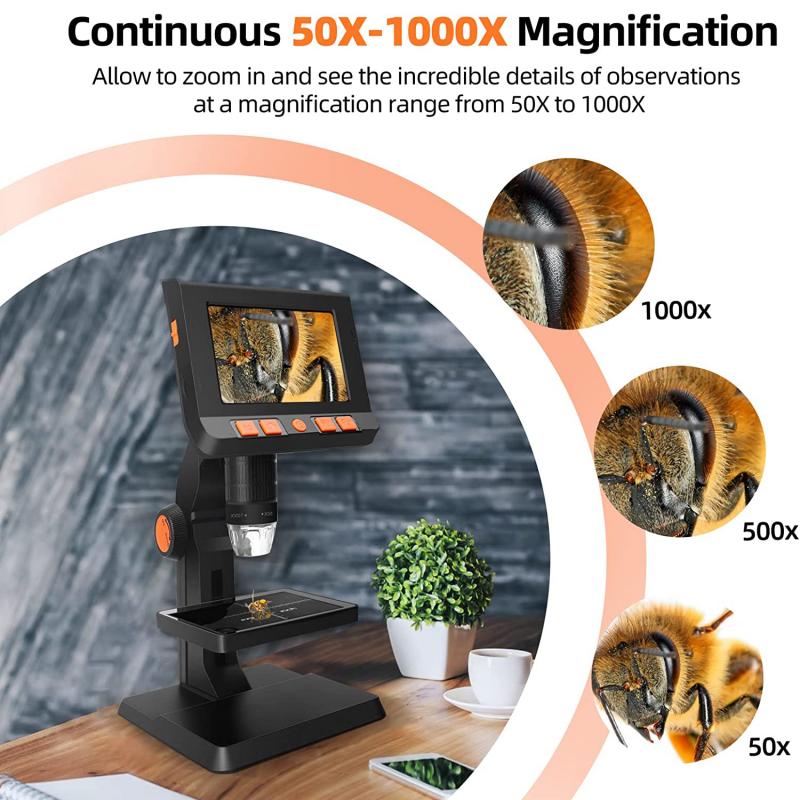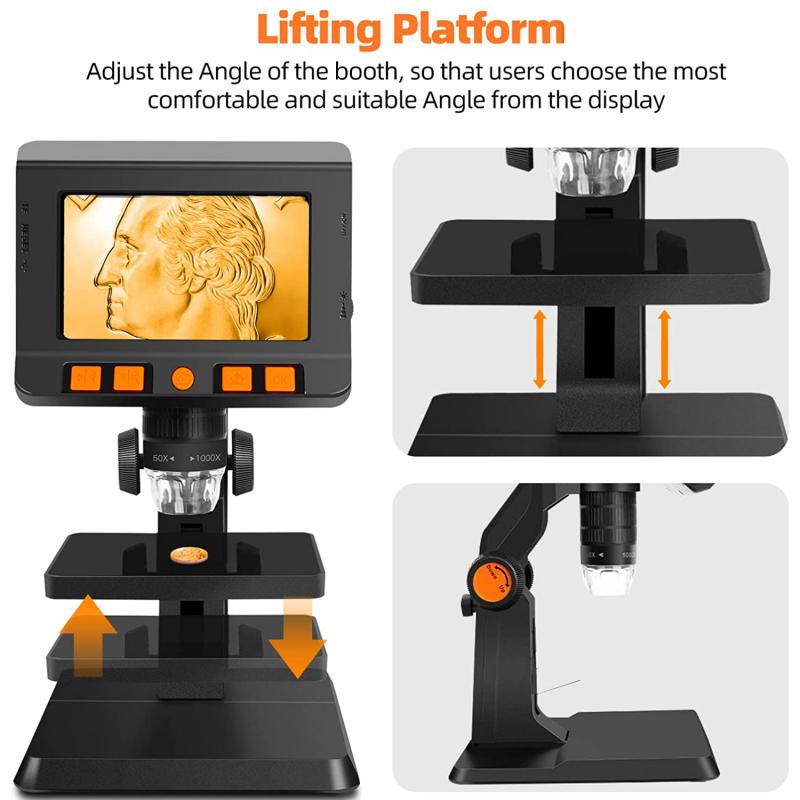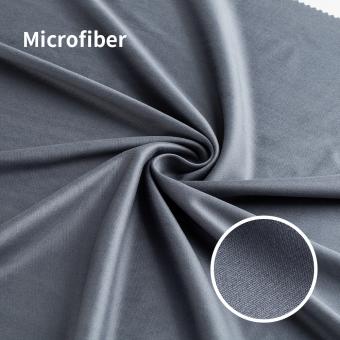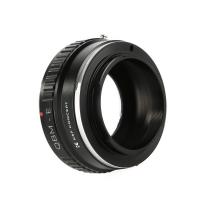What Can You See With Scanning Electron Microscope ?
A scanning electron microscope (SEM) allows for high-resolution imaging of the surface of a sample. It can provide detailed information about the topography, morphology, and composition of a wide range of materials. With an SEM, you can see the surface features of objects at a much higher magnification and resolution compared to an optical microscope. This includes the ability to observe fine details such as surface textures, cracks, and defects. Additionally, an SEM can reveal information about the elemental composition of a sample through energy-dispersive X-ray spectroscopy (EDS) analysis, which detects characteristic X-rays emitted by the sample when it is bombarded with an electron beam. Overall, an SEM is a powerful tool for visualizing and analyzing the microstructure of various materials in fields such as materials science, biology, geology, and nanotechnology.
1、 High-resolution imaging of surface topography and morphology
With a scanning electron microscope (SEM), one can observe and analyze the high-resolution imaging of surface topography and morphology. The SEM uses a focused beam of electrons to scan the surface of a sample, providing detailed information about its structure and composition.
The SEM can reveal the surface features of a wide range of materials, including metals, ceramics, polymers, and biological samples. It can capture images with magnifications ranging from a few times to several hundred thousand times, allowing for the examination of both macroscopic and microscopic features. The high-resolution imaging capabilities of the SEM enable the visualization of surface details that are not visible with other microscopy techniques.
By using secondary electron imaging, the SEM can provide information about the topography of a sample's surface. This technique allows for the visualization of surface irregularities, such as cracks, scratches, and surface roughness. It can also reveal the presence of contaminants or foreign particles on the surface.
Additionally, the SEM can provide insights into the morphology of a sample. By using backscattered electron imaging, the SEM can differentiate between different materials based on their atomic composition and density. This technique is particularly useful for studying the distribution of elements within a sample and identifying phases or grain boundaries.
In recent years, advancements in SEM technology have further enhanced its capabilities. For example, the introduction of environmental SEMs allows for the imaging of samples in their natural or hydrated state, providing a more realistic representation of their surface features. Furthermore, the integration of energy-dispersive X-ray spectroscopy (EDS) with SEM enables the simultaneous imaging and elemental analysis of a sample, providing valuable information about its chemical composition.
In conclusion, the scanning electron microscope is a powerful tool for high-resolution imaging of surface topography and morphology. It allows for the visualization of surface features, the identification of different materials, and the analysis of elemental composition. With ongoing advancements, the SEM continues to provide valuable insights into the structure and properties of various materials.

2、 Detailed analysis of material composition and elemental mapping
With a scanning electron microscope (SEM), one can observe and analyze a wide range of materials at a high resolution. The SEM provides detailed information about the material composition and elemental mapping, allowing researchers to gain valuable insights into the structure and properties of various samples.
The SEM uses a focused beam of electrons to scan the surface of a sample, generating signals that can be used to create highly magnified images. This technique enables the visualization of surface features and topography with exceptional clarity. By adjusting the parameters of the SEM, researchers can obtain images with different contrasts, revealing specific details about the sample's composition and structure.
Moreover, the SEM allows for the analysis of elemental composition. By detecting the characteristic X-rays emitted when the electron beam interacts with the sample, the SEM can identify the elements present in the material. This information is crucial for understanding the chemical composition and distribution of elements within the sample.
In recent years, advancements in SEM technology have further expanded its capabilities. For instance, energy-dispersive X-ray spectroscopy (EDS) can be integrated with the SEM to provide quantitative elemental analysis. This technique allows researchers to determine the relative abundance of different elements in the sample, aiding in the identification of unknown materials or contaminants.
Additionally, the SEM can be used for elemental mapping, which involves scanning the sample and collecting X-ray signals at different locations. By plotting the intensity of specific X-rays on a map, researchers can visualize the distribution of elements within the sample. This technique is particularly useful for studying heterogeneous materials or investigating the elemental composition of complex structures.
In conclusion, the scanning electron microscope offers a powerful tool for detailed analysis of material composition and elemental mapping. Its high-resolution imaging capabilities, coupled with techniques like EDS and elemental mapping, provide researchers with valuable insights into the structure, composition, and distribution of elements within a wide range of materials.

3、 Visualization of nanostructures and nanoparticles
With a scanning electron microscope (SEM), one can visualize nanostructures and nanoparticles in great detail. The SEM uses a focused beam of electrons to scan the surface of a sample, providing high-resolution images that reveal the topography and composition of the material being examined.
When it comes to nanostructures, the SEM can provide valuable insights into their morphology and size distribution. It can reveal the intricate details of nanoscale features, such as nanowires, nanotubes, and nanospheres. By adjusting the parameters of the SEM, researchers can obtain images with nanometer-scale resolution, allowing them to study the arrangement and organization of these structures.
Nanoparticles, which are particles with dimensions in the nanometer range, can also be visualized using an SEM. The microscope can provide information about the shape, size, and distribution of nanoparticles within a sample. This is particularly useful in fields such as materials science, where the properties of nanoparticles are closely linked to their size and shape.
In recent years, advancements in SEM technology have further expanded its capabilities. For instance, researchers have developed techniques such as energy-dispersive X-ray spectroscopy (EDS) and electron backscatter diffraction (EBSD) to complement SEM imaging. EDS allows for the elemental analysis of a sample, providing information about the chemical composition of nanostructures and nanoparticles. EBSD, on the other hand, can be used to determine the crystallographic orientation of materials, offering insights into their mechanical and electrical properties.
Overall, the scanning electron microscope is a powerful tool for visualizing and characterizing nanostructures and nanoparticles. Its high-resolution imaging capabilities, coupled with complementary techniques, enable researchers to gain a deeper understanding of these materials and their potential applications in various fields.

4、 Examination of biological samples at high magnification
With a scanning electron microscope (SEM), one can observe biological samples at high magnification, revealing intricate details that are not visible with other types of microscopes. The SEM uses a focused beam of electrons to scan the surface of a sample, creating a highly detailed image.
When examining biological samples with an SEM, one can see the surface morphology of cells and tissues with exceptional clarity. This allows for the visualization of fine structures such as cell membranes, organelles, and surface features like microvilli or cilia. The high magnification capabilities of the SEM also enable the observation of cellular interactions, such as the attachment of bacteria to host cells or the formation of cellular junctions.
In addition to surface morphology, the SEM can provide information about the elemental composition of a sample. By using energy-dispersive X-ray spectroscopy (EDS), the SEM can detect and map the distribution of elements within a biological sample. This technique is particularly useful for studying the distribution of minerals or metals within cells or tissues.
Furthermore, recent advancements in SEM technology have allowed for the imaging of biological samples in their natural, hydrated state. This technique, known as environmental SEM or wet SEM, enables the observation of dynamic processes such as cell division or the movement of cellular structures in real-time.
Overall, the scanning electron microscope provides a powerful tool for examining biological samples at high magnification. It allows researchers to explore the intricate details of cellular structures and interactions, providing valuable insights into the functioning of biological systems.































There are no comments for this blog.